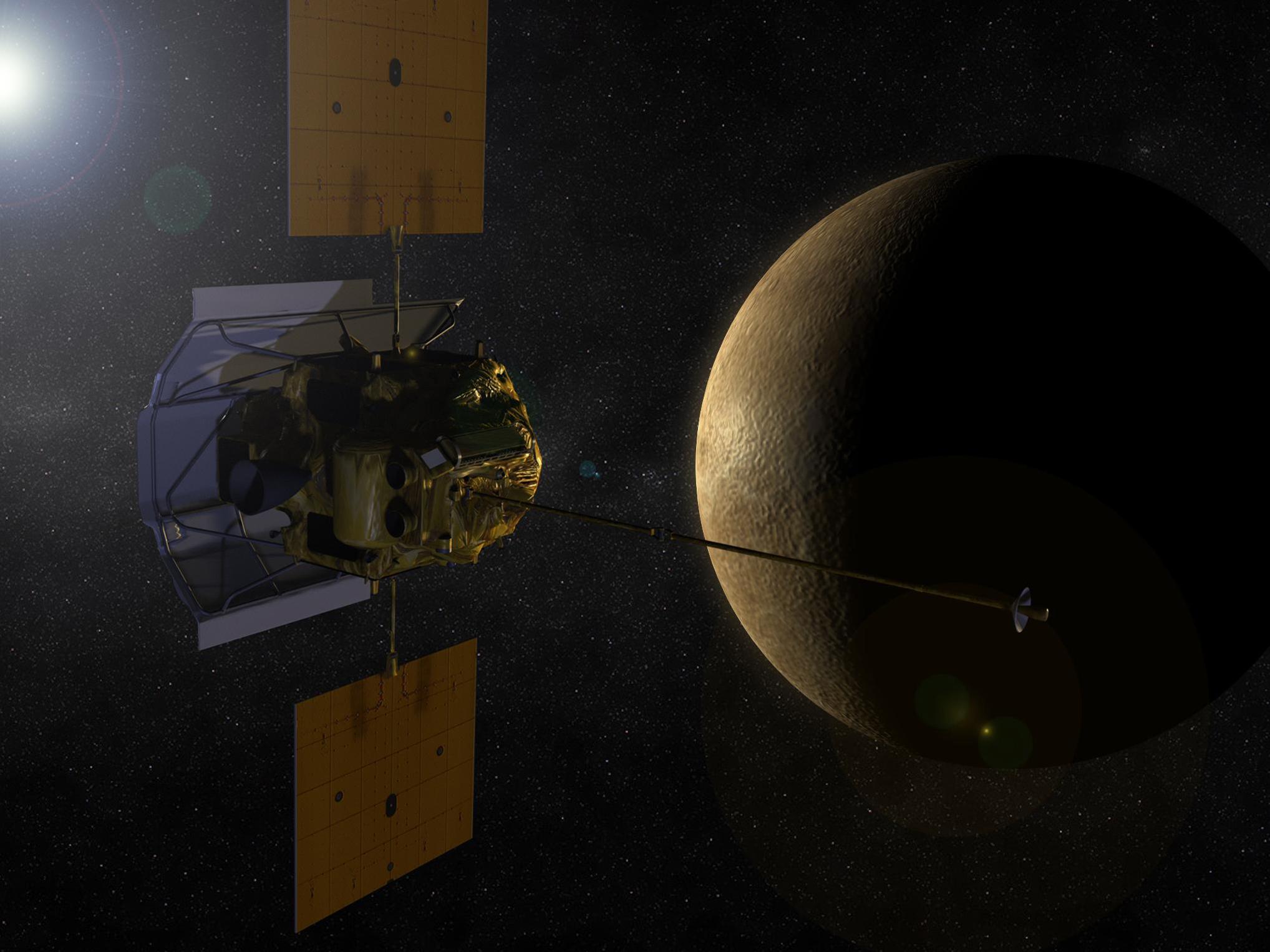Using NASA’s MESSENGER spacecraft’s close encounters with Venus and Mercury, researchers were able to measure the lifetime of neutrons, an important prediction of the Standard Model of particle physics.
Bundled up inside an atomic nucleus, the neutron (a massive, neutrally-charged particle) can live basically forever. But once liberated from those nuclear confines, the neutron doesn’t get to enjoy a long lifetime. In only about 15 minutes, it decays into a shower of other particles, like its positively-charged sibling, the proton, and a neutrino.
There have been many experiments to try to nail down the precise lifetime of the neutron. One set of experiments involve sticking a bunch of neutrons in a bottle, waiting around for awhile, then going back to the bottle and counting how many are left. This results in an average lifetime of 14 minutes and 39 seconds.
A second method involves shooting neutrons down a beam and counting how many make it to the end. Strangely, this results in an average lifetime of 14 minutes and 48 seconds.
For many years, the uncertainties in these measurements were larger than the 9-second difference between them. But as we’ve gotten better and better at counting neutrons, the uncertainties have gone down but the difference between the measurements remain.
On the theoretical side, the predictions involve very difficult calculations, and can’t choose a clear winner.
We need a tie-breaker.
A Neutron Message from Mercury
NASA didn’t design its MESSENGER (MErcury Surface, Space ENvironment, GEochemistry, and Ranging) spacecraft to study the decay of neutrons, but a team of researchers were able to use data taken from the probe to do exactly that.
MESSENGER spent some time near both Venus and Mercury, and those planets acted as giant bottles. Occasionally free neutrons would be produced by various and sundry processes on the surface, and some of them would decay into protons, which the spacecraft could detect way up in orbit.
By comparing the incoming proton rate to MESSENGER’s height above the surface, the scientists could work out the decay rate of the neutron. They reached a measurement of 13 minutes, plus or minus 130 seconds.
Since this method has such a large uncertainty, it can’t yet distinguish between the methods, but future analyses could – especially with a possible spacecraft designed to do exactly that.
We care so much about the neutron decay rate for a couple reasons. One, it’s an important prediction of our most advanced models of the nuclear world, and precisely measuring it could help us understand new physics. Secondly, the formation of elements in the early moments of the big bang (like the hydrogen and helium inside you right now) depends on how quickly the neutron decays. The more we understand about the neutron, the more we understand the big bang.

